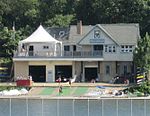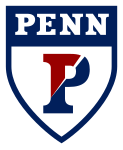Turtle Rock Light
1897 establishments in PennsylvaniaBoathouse RowBoathouses on the National Register of Historic Places in PennsylvaniaColonial Revival architecture in PennsylvaniaHistoric district contributing properties in Pennsylvania ... and 10 more
Lighthouses completed in 1887Lighthouses completed in 1903Lighthouses on the National Register of Historic Places in PennsylvaniaNRHP infobox with nocatNational Historic Landmarks in PennsylvaniaNational Register of Historic Places in PhiladelphiaPhiladelphia Register of Historic PlacesShingle Style architecture in PennsylvaniaSports clubs established in 1897Transportation buildings and structures in Philadelphia

The Lighthouse on Turtle Rock is a lighthouse built in 1887 to aid traffic on the Schuylkill River near Philadelphia, Pennsylvania. The lighthouse was constructed by Frank Thurwanger at a cost of $2,663 on an area of land just west of Boathouse Row. The lighthouse has a hexagonal lantern room with an octagonal walkway. Gas was first used to power the light, but in 1990, when the lighthouse was repainted and received a new wooden balustrade and newel posts, the beacon was electrified.
Excerpt from the Wikipedia article Turtle Rock Light (License: CC BY-SA 3.0, Authors, Images).Turtle Rock Light
Schuylkill River Trail, Philadelphia
Geographical coordinates (GPS) Address Nearby Places Show on map
Geographical coordinates (GPS)
| Latitude | Longitude |
|---|---|
| N 39.97 ° | E -75.189722222222 ° |
Address
Boathouse Row
Schuylkill River Trail
19130 Philadelphia
Pennsylvania, United States
Open on Google Maps











